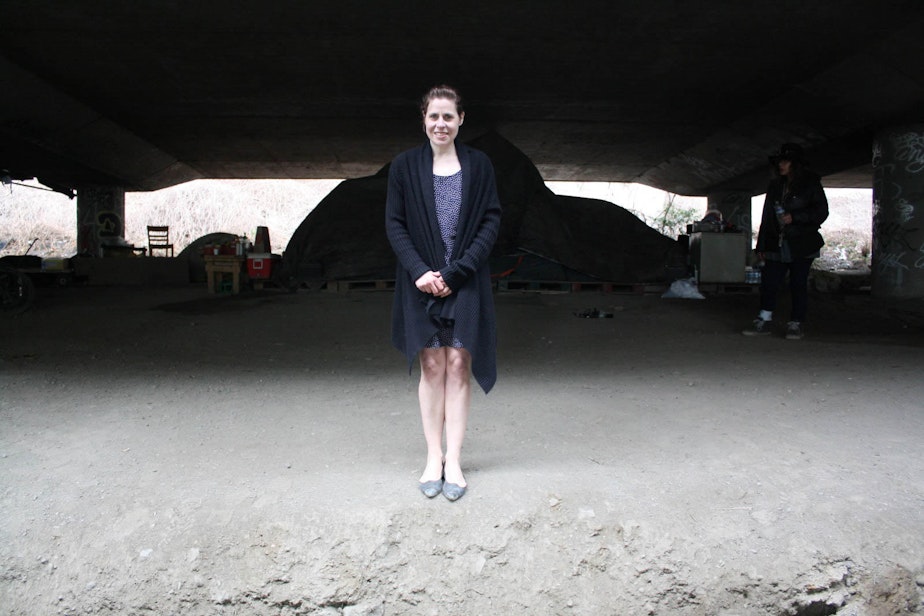How to move 400 people out of Seattle's homeless Jungle (including me)

The Jungle has been Seattle’s largest and most persistent homeless camp. Its origins can be traced back to the 1930s.
Earlier this year, about 400 people were living in tents under the three mile stretch of Interstate 5.
Reporters Joshua McNichols and Kate Walters present this one-hour special based on months of coverage about the people inside the Jungle and the systems that created it.
Some called it home, others said it was a magnet for criminals and drug dealers.
The Seattle Fire Department declared it so unsafe that its officers wouldn’t enter without a police escort.
Sponsored
Then, in January, a shooting in the Jungle left two people dead and three wounded. Suddenly, the Jungle was in the spotlight.
Now, nine months after Mayor Ed Murray declared he would shut it down, work crews have swept the Jungle clear of residents.
The move followed months of intensive outreach to the homeless people living there. Some got help. Others moved on to other encampments spread around the city.
In that time, we’ve learned a lot about the Jungle – what created it, what caused it to persist, and what kinds of solutions it suggests.
Sponsored
Life in the Jungle
Audio starts at 0:01:12
People wind up in the Jungle for all kinds of reasons. Some say shelters don’t work for them because they can’t bring their stuff, their partners or their pets with them.
In the Jungle they feel they have autonomy. Others stay there because it’s close to the methadone clinic where they receive treatment for opioid addiction. Still others say the Jungle is a kind of community where they feel safer than when they are living on the street.
In this act, we hear some of those voices from the Jungle.
Sponsored
System failure
Audio starts at 0:12:50
Seattle’s shelter system, for the most part, is overstretched. Beds are hard to come by and sometimes require standing in long lines, if you can get in at all.
Treatment centers also have waiting lists. And the mental health safety net is unable to help all those who need it.
In this act, we follow along as one worker tries to find leftover shelter beds for people late at night. We also hear from service providers about some of the challenges they face.
Sponsored
Moving forward
Audio starts at 0:30:46
Mayor Ed Murray has declared Seattle’s homeless crisis a state of emergency. But there are some known solutions.
One of those is “housing first” – getting people into housing before they get sober or before their mental health issues are in control. It’s a concept pioneered in Seattle, but that hasn’t yet been widely used.
In this act, we hear from people about some of the ways we can reduce homelessness in the Seattle area.
Sponsored
Credits
Out of the Jungle was edited by Carol Smith with sound design by Whitney Henry-Lester.
Music: “Looking On,” by Blacksona (Creative Commons) | “And Then There Was Red,” by Kyle Preston (Creative Commons) | “Home,” by Glasser; “Mellow Harmonics,” by Sounds Like An Earful (Creative Commons) | “Recruitment Gong,” “New England Air” and “New England is Interesting” by BOPD (Creative Commons) | “Lichen” and “Parchment” by Wil Bolton (Courtesy of artist)

